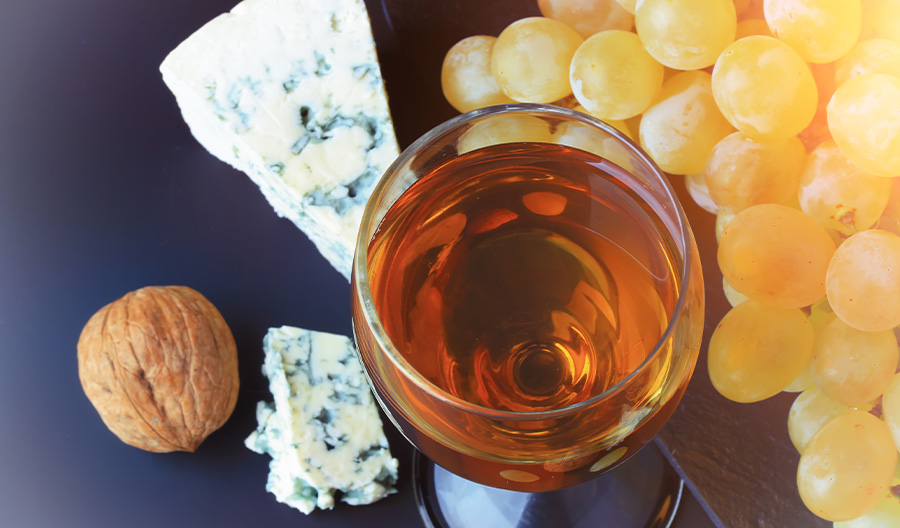Sauternes wine, originating from the esteemed Bordeaux region of France, epitomizes luxury in the realm of dessert wines. Distinguished by its rich golden hue and intricate flavor profile, Sauternes is crafted from grapes affected by Botrytis cinerea—commonly referred to as noble rot. This naturally occurring fungus dehydrates the grapes, intensifying their sugars and flavors to produce a sumptuous and opulent wine.
The primary grape varieties employed in Sauternes production include Semillon, Sauvignon Blanc, and Muscadelle. These grapes are typically harvested late in the growing season to allow noble rot to fully develop, transforming them into highly concentrated and flavorful fruit. Following harvest, the grapes undergo meticulous pressing to extract their sweet juice; this juice is then fermented and aged in oak barrels to cultivate Sauternes' complex flavors.
Noted for its profound sweetness with undertones of honey, apricot, peach, and tropical fruits, Sauternes also possesses a distinct minerality alongside subtle acidity that balances its richness. This exquisite profile makes it an ideal companion for desserts such as fruit tarts or crème brûlée and complements blue cheeses exceptionally well.

Sauternes wine represents a pinnacle of indulgence sought after by connoisseurs globally. Its exceptional production process combined with a sophisticated flavor palette renders it perfect for special occasions where only extraordinary will suffice.
How to Introduce Sauternes Wine to Your Customers
When introducing Sauternes wine to customers, it's important to highlight its distinct qualities and suggest food pairings that complement its flavors. Here are a few points to consider:
Taste Profile: Sauternes wine is known for its luscious sweetness balanced by a refreshing acidity. It has a full-bodied texture and a rich, golden color.
Noble Rot: Sauternes grapes are affected by botrytis cinerea, a beneficial fungus that concentrates the sugars and flavors in the grapes. This process gives the wine its unique taste and complexity.
Food Pairings: Sauternes wine pairs exceptionally well with foie gras, blue cheese, and desserts like crème brûlée or fruit tarts. The sweetness of the wine complements the richness of these dishes.
Aging Potential: Sauternes wines have excellent aging potential. They can develop even more complexity and depth over time, making them a great choice for wine enthusiasts and collectors.
Serving Temperature: Sauternes wine is best served chilled, around 8-10°C (46-50°F), to enhance its flavors and balance the sweetness.
When recommending Sauternes wine to customers, you can also offer tasting notes and suggest specific bottles or vintages that showcase the unique characteristics of this wine. Remember to provide information about the winery and the winemaking process to add depth to the customer's understanding and appreciation of Sauternes wine.

